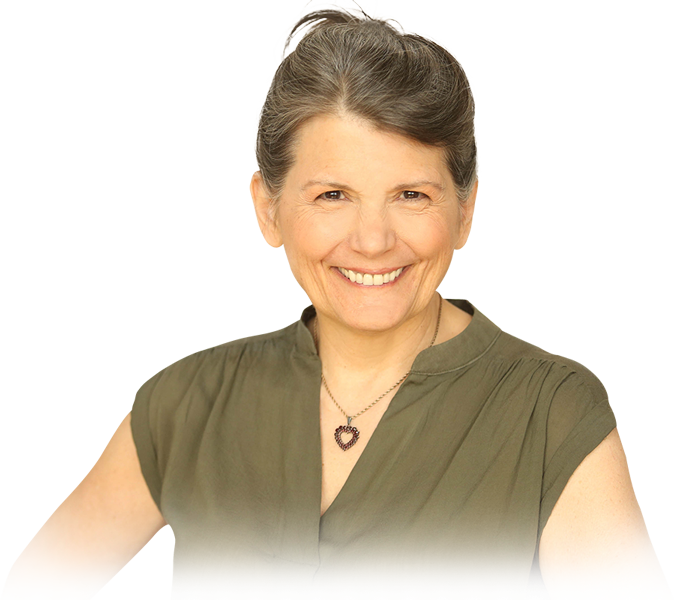
Today is Groundhog Day, and that means that I’ll be watching Bill Murray and Andie McDowell tonight!
The fairytale movie was made in 1993 but the life lessons are timeless… and they are business lessons, too.
Murray’s snarky, self-absorbed character — Phil — gets trapped in Punxsutawney, PA on Groundhog Day until he becomes worthy of Andie MacDowell’s character. Despite his extremely high opinion of himself, Phil is no great prize — but he’s got a lot of potential just waiting to be tapped.
The biggest obstacle in his path is that he’s not going to be able to tap into that potential until something changes — and because he’s focused on changing the wrong things, for quite a while, things look pretty bleak.
This is a lot like how it is for hands-on practitioners who have so much to offer their clients — but don’t know how to get found or help people understand why they should commit to doing the work that will transform their lives.
Let’s see how the lessons of Groundhog Day can help…
1. Nothing can change until you get out of denial.
Night after countless night, Phil goes to bed expecting to wake up on February 3rd. He’s not just trapped in time — he’s trapped in denial, so he does everything he can to change the external circumstances rather than himself.
The problem is that external problems tend to be huge — and that means it’s very difficult to find solutions. For example, most struggling practitioners are focused on trying to explain their modality, make it better-known, find the one person who will raise awareness so that the whole planet is clamoring for that modality.
If this is what you’re doing, you’re likely to miss the one thing you can change: YOURSELF! To get a different result, try BEING different.
One of the first principles of business is that people buy from people they like and want to be around… people they feel connected to… people they trust. When clients are looking for a solution, who you are being matters more to them than the modality you practice.
Ask yourself: How can I become the practitioner who has the clients and the practice I want? (Keep asking until you get an answer that’s about YOU.)
2. Do something different.
Phil didn’t acheive his goal the first time he tried out a new thing… it was a process for him, same as for you in your practice. Once he figured out that doing the same old thing got him the same old results, he started experimenting. Along the way, he learned to keep what worked and ditch the rest. That left room in his day for something he hadn’t yet tried.
When you’re stuck somewhere you don’t want to be — let’s imagine let’s imagine its “I-Need-More-Clients-Land” — the last thing that’s going to help is doing the same thing you’ve been doing all along. Sure, it’s the thing that’s easy to think of — but if it hasn’t worked until today, what miracle are you expecting that will make a difference tomorrow?
Change it up! Try something different. Keep what works and let go of what doesn’t.
Ask yourself: What am I doing that isn’t giving me the results I want? What will it take for me to give it up so I can make room to try something else?
3. Get help from someone who has done what you hope to do.
One day, Phil decides to learn to play the piano. Starting from scratch, he increases his ability every day until we see him at the piano as the center of attention at a party.
It’s fun to watch his skill blossom along with his personality… but he didn’t do it alone. When he made the decision to learn, he found someone who already knew how to play the piano and had the skills to teach him.
Many practitioners, movement educators and healers are self-employed — but the truth is that most don’t really even want a business. If that describes you, you may already have discovered that it’s really hard to focus on the business side of your practice. Figuring it out on your own is next to impossible when you don’t know what you should be paying attention to, and especially if you resist focusing on it!
Then there’s the question of where to get help.
Maybe you feel like most of the business advice that’s available to you isn’t applicable — it may be “too big” for where you are, or maybe you feel like it’s too impersonal, or not relevant to the kind of work you do. Or maybe it’s too detailed, too advanced, too complicated — because after all, what you really want to do is help people. Everything else seems much less important. Or maybe it makes you feel bad about yourself.
The key is to find a mentor who has done what you want to do and helps you do the same thing in a way that builds on your natural strengths. The point is not just to get results, but to make it feel easy and just like “you.”
Ask yourself: How can I find out what I really need to pay attention to? What’s involved in getting myself to commit to doing it? What strengths do I have to drawn on that will help me?
Are you ready for something different?
If it feels like you’ve been doing it on your own for long enough — and you’re ready to make a change — let’s talk! You’ll discover the 3 essential ingredients of a sustainable practice and find out where you need to focus to make the change you’re looking for.
Click here to make an appointment… it could change what you see when you look at your practice!
~~~~~
Did this article make you think? Get email updates — it’s free and it comes with surprises in your inbox!

